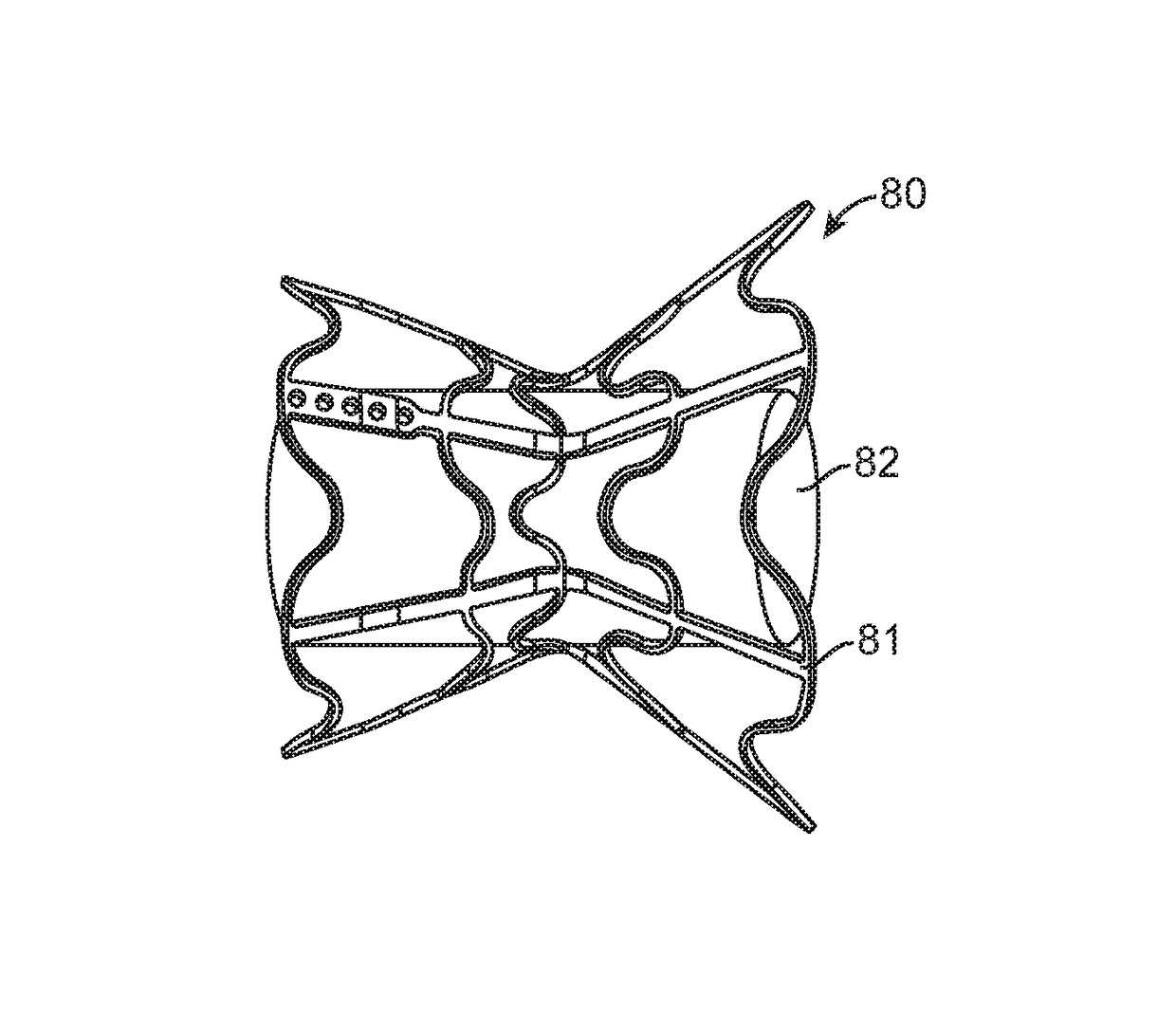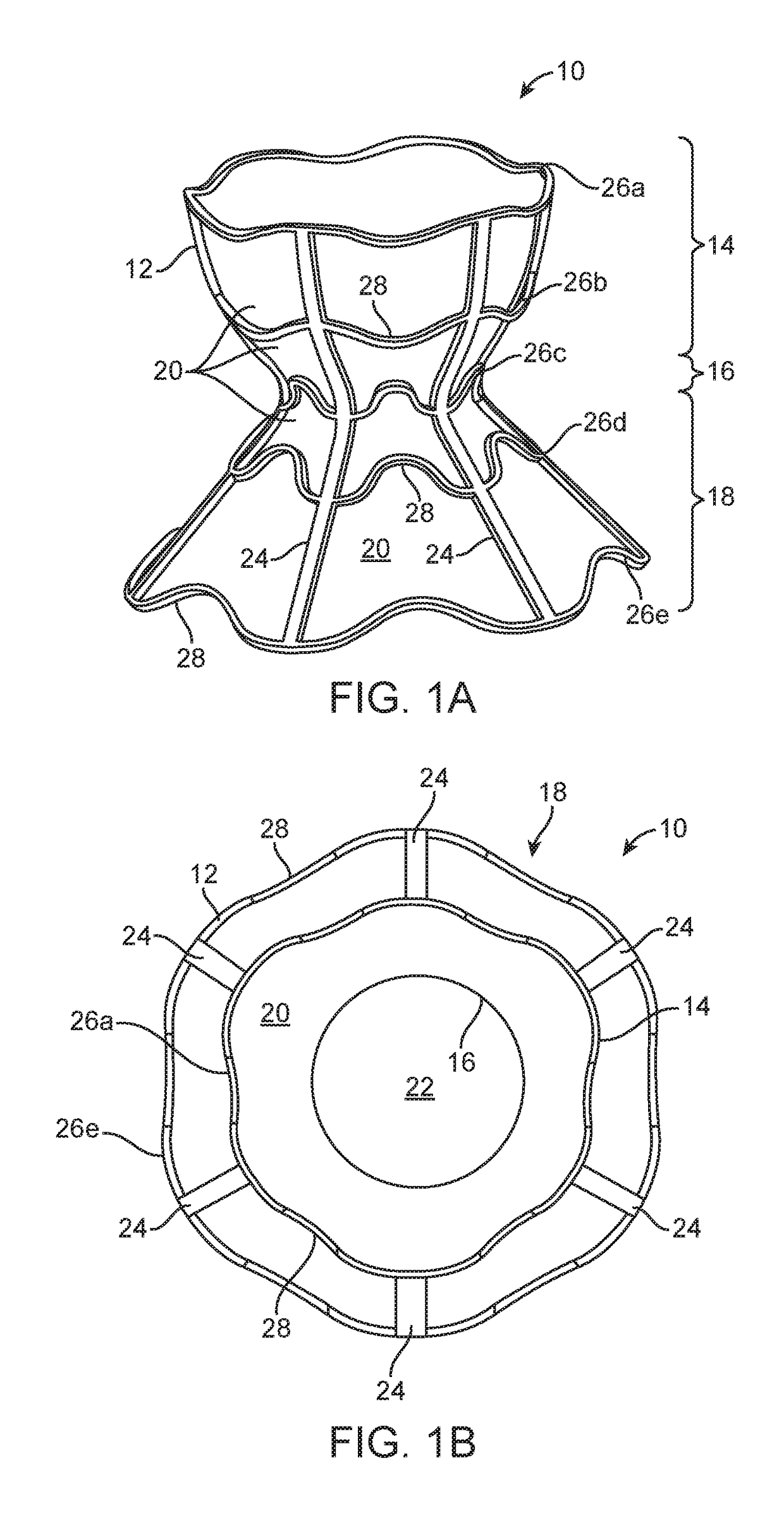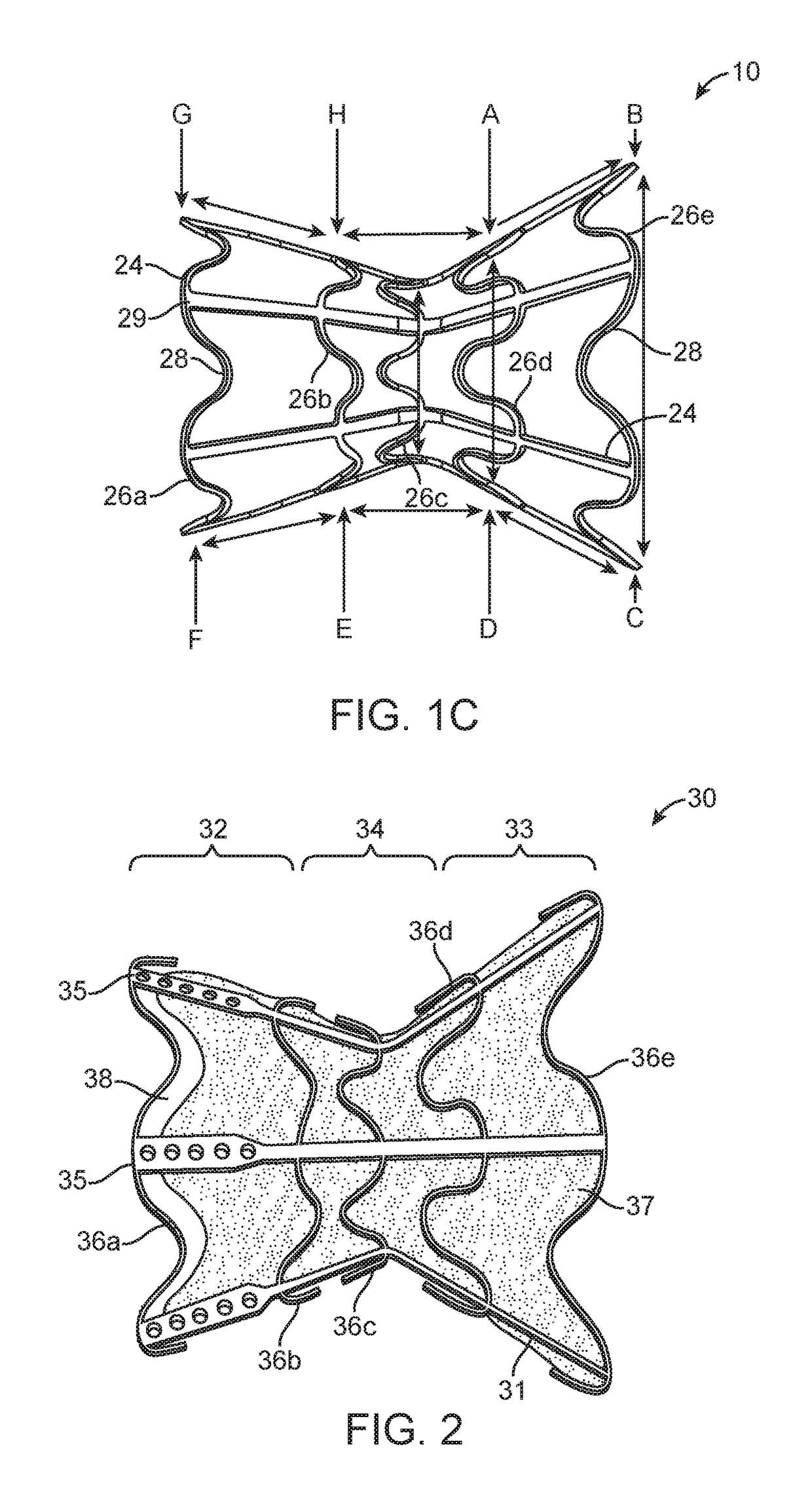Shunt for redistributing atrial blood volume
a technology of atrial blood volume and shunt, which is applied in the field of percutaneous placement of implants, can solve the problems of substantial fall in lv end-diastolic pressure, and achieve the effect of reducing the risk of paradoxical embolism and maintaining luminal patency
- Summary
- Abstract
- Description
- Claims
- Application Information
AI Technical Summary
Benefits of technology
Problems solved by technology
Method used
Image
Examples
Embodiment Construction
[0098]Interatrial shunts are provided for redistributing interatrial blood volumes and reducing left atrial pressure, which may be advantageous in treating subjects suffering from heart failure (HF) or other disorders associated with elevated left atrial pressure. A preferred embodiment of the inventive device includes an anchor, which may be an hourglass or “diabolo” shaped stent or frame, and a conduit, formed by encapsulating the frame in a synthetic biocompatible material. The shunt is configured to be lodged securely within a passage formed in the atrial septum, preferably the fossa ovalis, and provides one-way blood flow from the left atrium to the right atrium, when blood pressure in the left atrium exceeds that on the right.
[0099]Referring now to FIGS. 1A to 1C, an illustrative embodiment of shunt 10 of the present invention is described. Shunt 10 generally comprises anchor 12 having three regions: flared or funnel-shaped end region 14, flared or funnel-shaped end region 18,...
PUM
 Login to View More
Login to View More Abstract
Description
Claims
Application Information
 Login to View More
Login to View More - R&D
- Intellectual Property
- Life Sciences
- Materials
- Tech Scout
- Unparalleled Data Quality
- Higher Quality Content
- 60% Fewer Hallucinations
Browse by: Latest US Patents, China's latest patents, Technical Efficacy Thesaurus, Application Domain, Technology Topic, Popular Technical Reports.
© 2025 PatSnap. All rights reserved.Legal|Privacy policy|Modern Slavery Act Transparency Statement|Sitemap|About US| Contact US: help@patsnap.com



